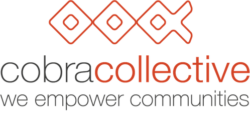Exploring issues and opportunities
Building capacity was not the only activity the local North Rupununi District Development Board team was engaged in during their visits to the communities of Apoteri, Rewa, Aranaputa and Fair View. The team also worked with community members to explore the challenges they believed they were facing when it came to their traditional knowledge.
The villagers were asked to work on two main tasks. The first was to identify challenges to traditional knowledge related to both their communities and the protected area in proximity to their lands – the Iwokrama Forest. They were then asked to prioritise these challenges, create a vision for how to overcome the most important challenge and plan how they would achieve this vision. The vision identified had to be a community owned solution. Why a community owned solution you may ask. Because it should be an activity that the community could implement with little resource and outside assistance. Community owned solutions are those answers to challenges arising from communities that answer these basic questions: Does the community need it? Does the community do it? Does the community control it? Does the community benefit from it? Is it fair? Is it good for the environment? And is it self-reliant and not dependent on long term external support?
The second task was to look at a list of community viability indicators to determine which required the use of traditional knowledge and to determine the state of that knowledge base over the last five to ten years and into the future. The community viability indicators were developed during the COBRA project while exploring what communities needed to remain whole, functional and healthy. The indicators were then prioritised as very important, important and least important. Of the most important, villagers were then asked to identify those which could be classed as community owned solutions for both the community and the protected area.
To work on these tasks, community members were divided into men, women and youths to be able to hear the opinions of different groups, especially women and youths. Taken together the challenges identified fell into two areas; the transmission of traditional knowledge, and change in practices, with the most dire being the loss of the language among the youth. Many of the youths felt they did not know a lot about their culture and practices, and lament their inability to speak their languages. The adults put the blame on shame. The youths put the blame on the parents not having the time to teach. In visioning for the challenges, many advocate the formalisation of teaching traditional knowledge – languages and practices – as the new method of transmitting the culture.
Most of the communities would like to see Indigenous language as a subject on the school curriculum and having craft makers holding classes for the youth with community support. It is the hope of this project that these communities would implement these solutions as a demonstration of their dedication to ensuring the survival of their culture. As indicated by one youth in Fair View “as long as we know, they will know.”





